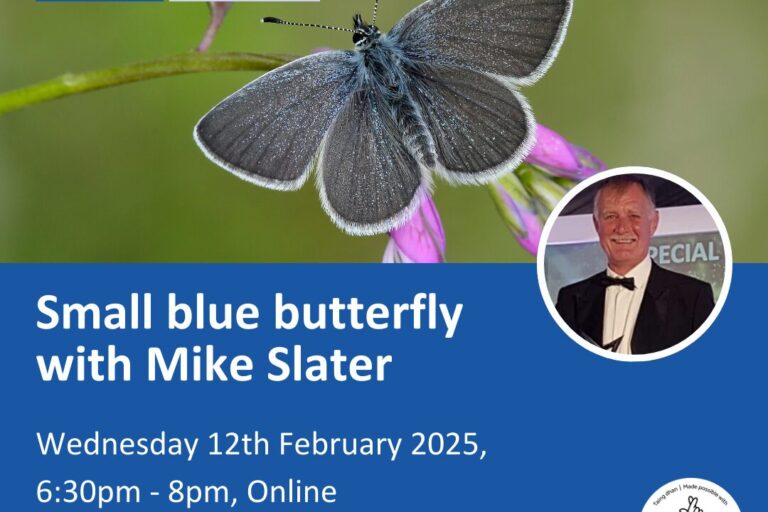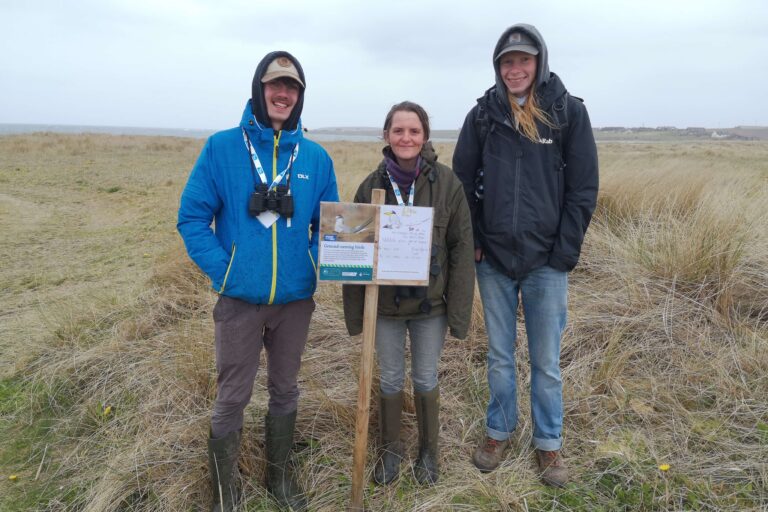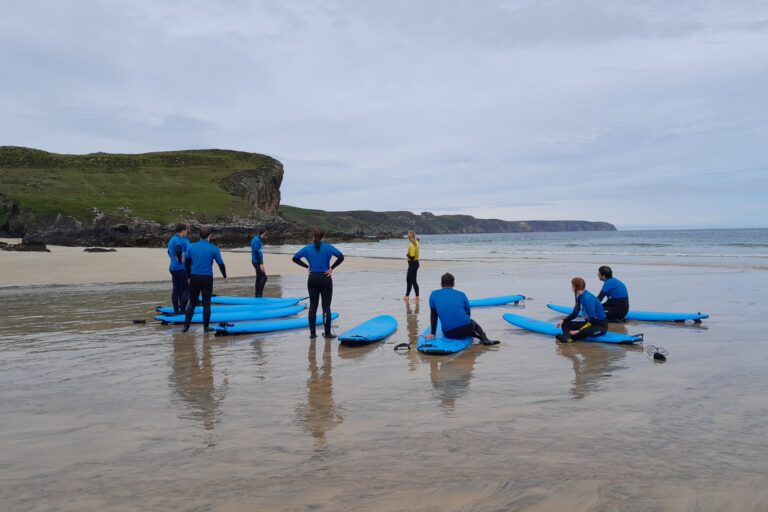This blog post has been contributed by the Remote Scotland Expedition Group from the University of Glasgow – Emma Burnside, Eugenia Dukes Ross, Aubrey Small, Cristina Hutchison, Torri Bradley-Mowat, Luca Nobile and Duncan Appleyard.
We are a group of students from the University of Glasgow undertaking a student-led research expedition for 6 weeks on the Isle of Harris and Lewis. We are conducting three research projects which aim to further understand the islands’ ecosystems, focusing on various aspects of anthropogenic effects and species interactions across the island. We’re excited to contribute to the Species on the Edge blog to highlight our recent activities and fieldwork in the Outer Hebrides, including our volunteering endeavours with Species on the Edge and The Bumblebee Conservation Trust.
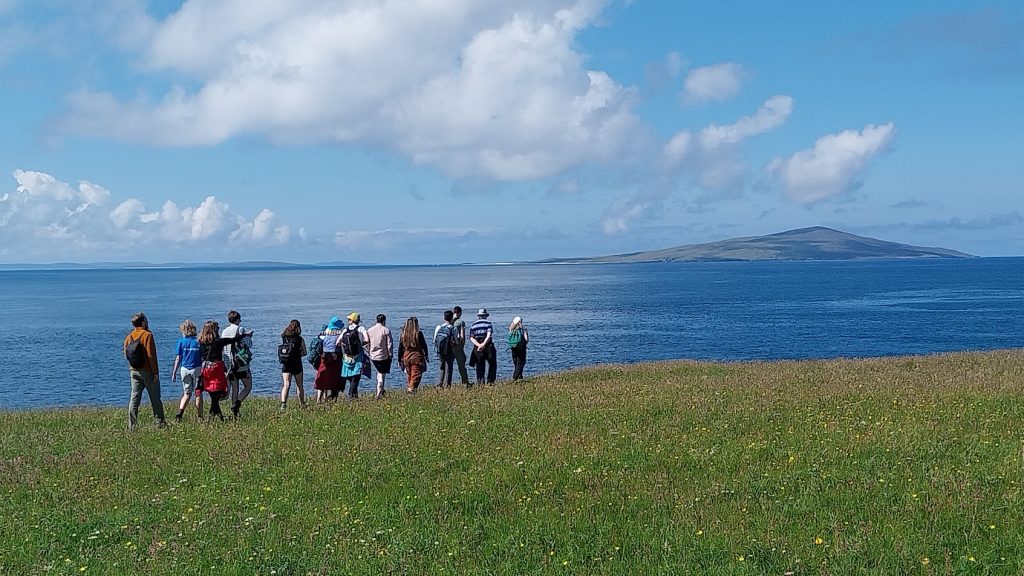
Prior to our expedition, we were very lucky to receive bumblebee ID training and BeeWalk Leader training which was arranged through the Species on the Edge initiative in collaboration with the Bumblebee Conservation Trust. These sessions were so informative and helped build our confidence in identifying bumblebees which was very helpful to the bumblebee project. This training has also significantly enhanced our capacity to connect and engage with members of the public, and encourage awareness of effective conservation efforts within the local community. We hosted a successful collaboration with the Outer Hebrides Wildlife Festival, holding public events at Northton and leading very well-attended BeeWalks.
During our time here we have volunteered with Species on the Edge at HEBCELT and the Leverburgh Agricultural Show. These were both amazing opportunities to engage with the public and spread the word about Species on the Edge and about our research projects, along with receiving advice and information about the local area which was vital to the progress of our projects. Through Species on the Edge, we were given the opportunity to network with lots of other researchers and professionals who helped us improve and refine our projects and from whom we learned so much about careers in this field. This is invaluable for future expeditions, as, in previous years, we have struggled to connect with organisations in the Outer Hebrides. Our connections with Species on the Edge are something we are excited to pass on to future years, as we cannot overstate their help in our project success so far.
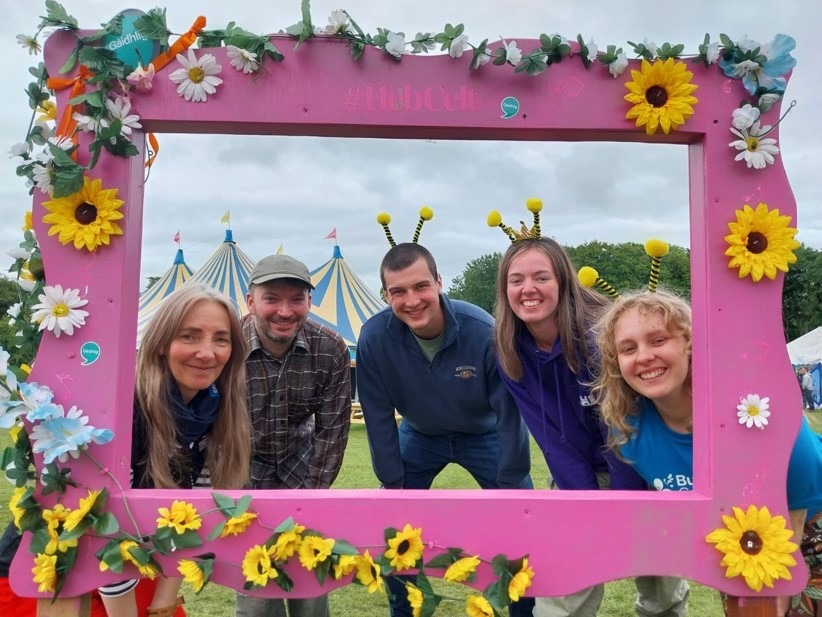
Our projects are motivated by our keen interest in the Outer Hebrides. Each year, our expedition runs three or four projects on a variety of topics, including otters, wader birds, bees, invertebrates, and birds of prey. This year, we are running three projects, looking at bumblebees, otters, and rockpool species diversity.
Researching bumblebees in the Outer Hebrides
Our bumblebee project is looking into the abundance and diversity of bumblebees in machair habitats across Harris and Lewis, and their interactions with Ragwort and wild rabbit populations. The machair habitats of Harris and Lewis are home to the Great Yellow Bumblebee and the Moss Carder bumblebee which are now only found in a few areas of northwest Scotland. Ragwort has been found to yield four times more nectar than plant species which are recommended to increase insect diversity; however, it is often eradicated from areas with livestock despite only posing a threat when cut. As there is misguidance on how to deal with ragwort, it is interesting to investigate how bumblebees rely on this plant. Additionally, wild rabbits disturb the ground through burrowing, which promotes ragwort growth, however if ragwort grows too much or land is too disturbed it can dominate the machair, decreasing abundance of other flower species. These relationships are delicate, interconnected, and are largely affected by land management and human activities. This makes it crucial to preserve this rare environment through traditional crofting practices which can encourage growth of healthy machair.
Despite this being a tough year for bumblebees in the Outer Hebrides due to the harsh weather conditions, we have been lucky enough to see a Great Yellow bumblebee and lots of Moss Carders during our research. So far, we have noticed that areas that are more heavily grazed only seem to be attracting buff-tailed and white-tailed bumblebees, possibly due to the lack of floral diversity. These areas also rarely have any ragwort. We have also noticed that the worker bumblebees are physically very small and are emerging later and in much lower numbers than we would expect. Why these differences are occurring and what their implications are is something that we hope future projects will focus on.
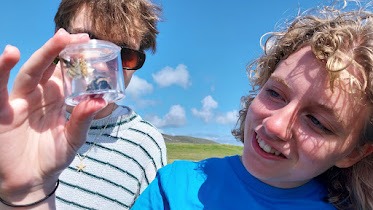
Investigating rockpools
In our second project, we are investigating the biodiversity of rockpool habitats, focusing on the relationships between macroalgal (seaweed) diversity and coverage, geology, and shoreline exposure with the abundance and diversity of marine species on the Isle of Harris and Lewis.
Rockpooling is an enjoyable and accessible way for anyone, not just scientists, to explore and learn about marine life. Rockpools provide refuge for various species, including echinoderms (such as sea stars and sea urchins), molluscs (like limpets, winkles, and whelks), cnidarians (such as jellyfish and anemones), and crustaceans (including crabs and isopods).
In addition to these marine invertebrates, macroalgae, commonly known as seaweed, can be found along shorelines and in rockpools. Seaweed offers protection to many rockpool species from currents and predators.
Marine life in rockpools may also be influenced by shoreline exposure to waves (fetch) and the geological structure of the rocks. This project aims to identify these relationships and gather more information on rockpools. Rockpools are home to immense biodiversity, supporting unique species that can withstand harsh conditions. Conserving and protecting rockpools is particularly important in the face of rising sea temperatures and ocean acidification.
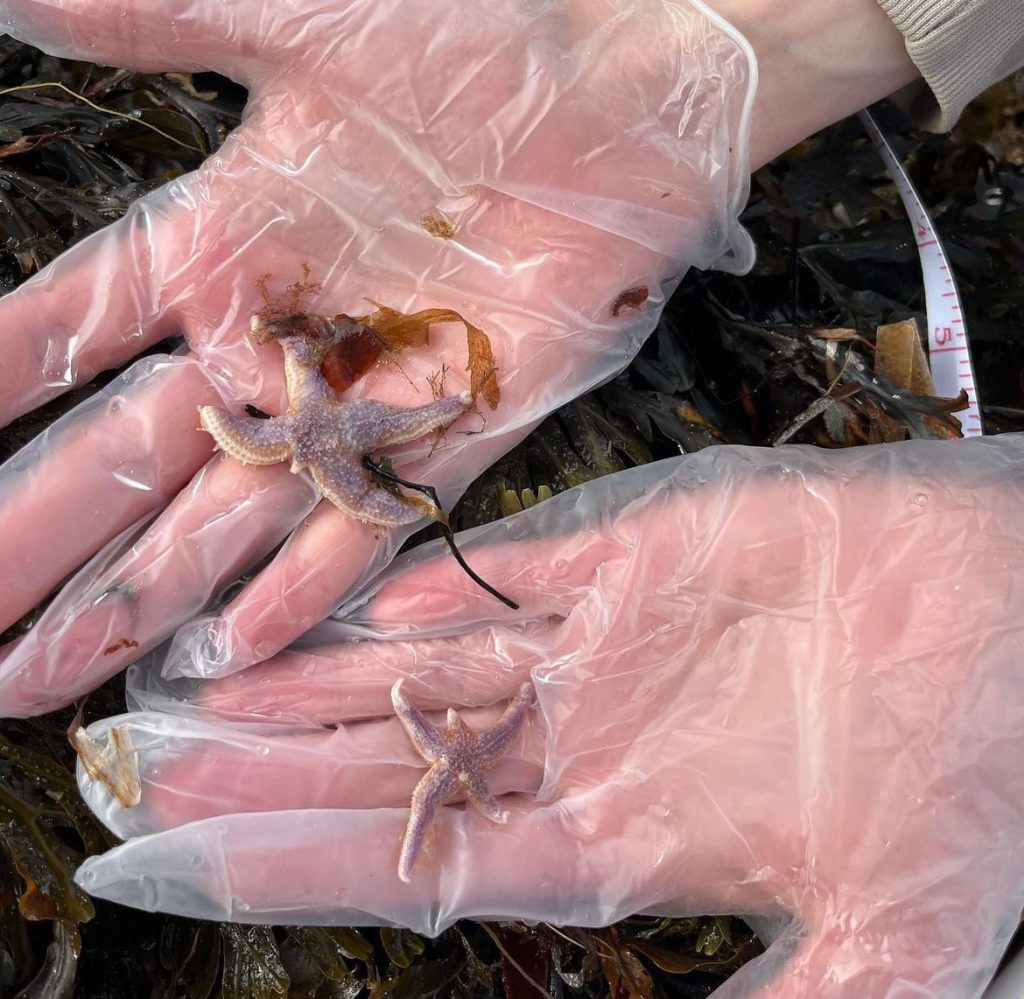
Investigating the impact of pollution on otters
Our otter research project looks at how different levels of pollution in an environment affect the chances of otters being present. Sites were picked through a mixture of surveying for otter holts and local knowledge of otter presence.
At each site, any plastic found was recorded, and water pH and turbidity were recorded. These are all factors that can indicate environmental pollution levels. Any plastics found will be classified by origin and composition. So far, most plastic found appears to have come from fishing boats, though a full analysis of all found plastic pieces is yet to be done.
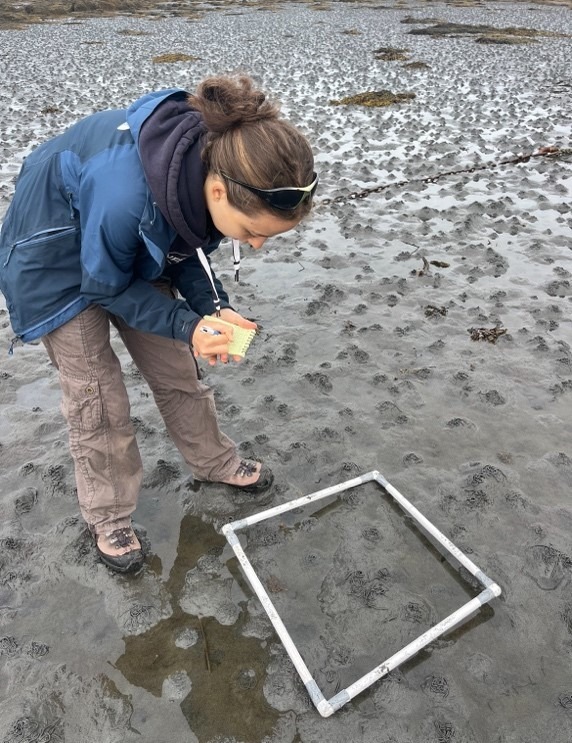
Thanks to the training, support and volunteering opportunities with Species on the Edge we have been able to grow our skills and experience and improve the scope of our projects – which would have been impossible without the support of Volunteer Manager with the Bumblebee Conservation Trust Rhodri Green, Species on the Edge People Engagement Officer Mairi Carrey, Project Officer Emma Stobart, marine biologist with Wild Harris, Darryl Brown, and marine biologist with NatureScot, Kelly James. We have learned a lot from our expedition and cannot wait to see what next year’s expedition does with the foundations Species on the Edge has helped us to create here.
We’re committed to sharing any data collected during our fieldwork with the Species on the Edge project and other relevant Outer Hebrides organisations involved in conservation, such as the Outer Hebrides Biological Recording Group. This collaboration will, we hope, help enhance the overall conservation efforts in the islands. Please get in touch to find out more.
To further our outreach, please feel free to visit and share our social media.
This platform is a great resource for staying up-to-date with our latest activities, findings, and upcoming events.
